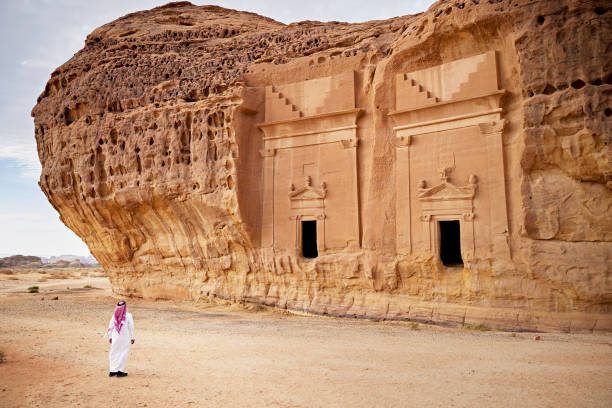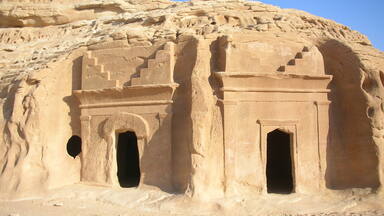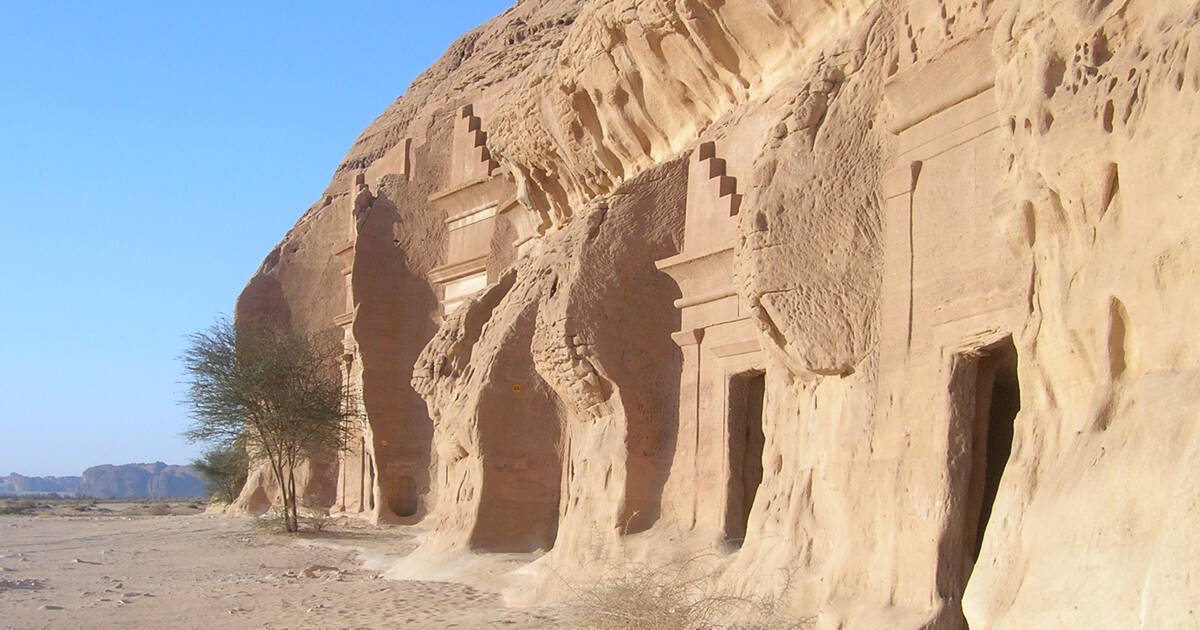The largest intact Nabataean site south of Petra, Jordan, is Hegra.

Hegra, also known as Al-Hijr or Mada’in Saleh, is a monumental archaeological site in Saudi Arabia, renowned as the largest conserved remnant of the Nabataean civilization south of Petra in Jordan. This ancient city, once a thriving hub on the caravan trade routes, now stands as a testament to the architectural and engineering prowess of the Nabataeans. Its well-preserved monumental tombs, adorned with intricate facades, date back from the 1st century BC to the 1st century AD, offering a fascinating glimpse into the past.
The site of Hegra is home to 111 monumental tombs, 94 of which are decorated with elaborate carvings and inscriptions. These tombs are carved directly into the sandstone cliffs, showcasing the Nabataeans’ sophisticated craftsmanship and artistic sensibilities. The decorated facades are adorned with motifs and symbols that reflect a blend of influences from various civilizations, including Greek, Roman, and Egyptian, illustrating the Nabataeans’ extensive trade connections and cultural interactions.

Among the most notable tombs in Hegra is the Qasr al-Farid, also known as the “Lonely Castle.” This solitary tomb stands out due to its isolated location and unfinished facade, providing valuable insights into the construction techniques and artistic processes of the Nabataean stone carvers. The tomb’s facade features a blend of Hellenistic and local architectural elements, including Corinthian columns and Nabataean crowstep motifs, highlighting the fusion of styles that characterizes much of Nabataean architecture.
In addition to its impressive tombs, Hegra also features a network of water wells and cisterns that underscore the Nabataeans’ hydraulic expertise. The ability to harness and manage water resources in the arid desert environment was crucial to the survival and prosperity of the Nabataean civilization. These water systems, which include rock-cut wells and sophisticated channels, enabled the Nabataeans to sustain their population, agriculture, and trade activities, making Hegra an outstanding example of their engineering ingenuity.

The conservation of Hegra has allowed for extensive archaeological research, shedding light on the daily life, religious practices, and social structures of the Nabataeans. Inscriptions found on the tombs provide valuable information about the individuals buried within, including their names, professions, and family connections. These inscriptions, written in Nabataean Aramaic, also offer insights into the linguistic and cultural aspects of the civilization.
Hegra’s significance extends beyond its architectural and hydraulic achievements. As a major center on the incense trade route, it played a vital role in the economic and cultural exchanges between the Arabian Peninsula and the Mediterranean world. The wealth generated from this trade facilitated the development of Hegra into a prosperous city, adorned with monumental structures and intricate artworks that reflected its status and influence.

Today, Hegra is recognized as a UNESCO World Heritage Site, acknowledged for its outstanding universal value and its role in illuminating the history and culture of the Nabataeans. The site’s preservation allows visitors to experience the grandeur and sophistication of this ancient civilization firsthand, fostering a deeper appreciation for the ingenuity and creativity of the Nabataeans.
In conclusion, Hegra stands as the largest conserved site of the Nabataean civilization south of Petra in Jordan, featuring well-preserved monumental tombs with decorated facades dating from the 1st century BC to the 1st century AD. With its 111 monumental tombs, 94 of which are decorated, and its sophisticated water management systems, Hegra exemplifies the architectural and hydraulic accomplishments of the Nabataeans. This remarkable site not only showcases their artistic and engineering prowess but also provides valuable insights into their cultural and economic significance in the ancient world.










